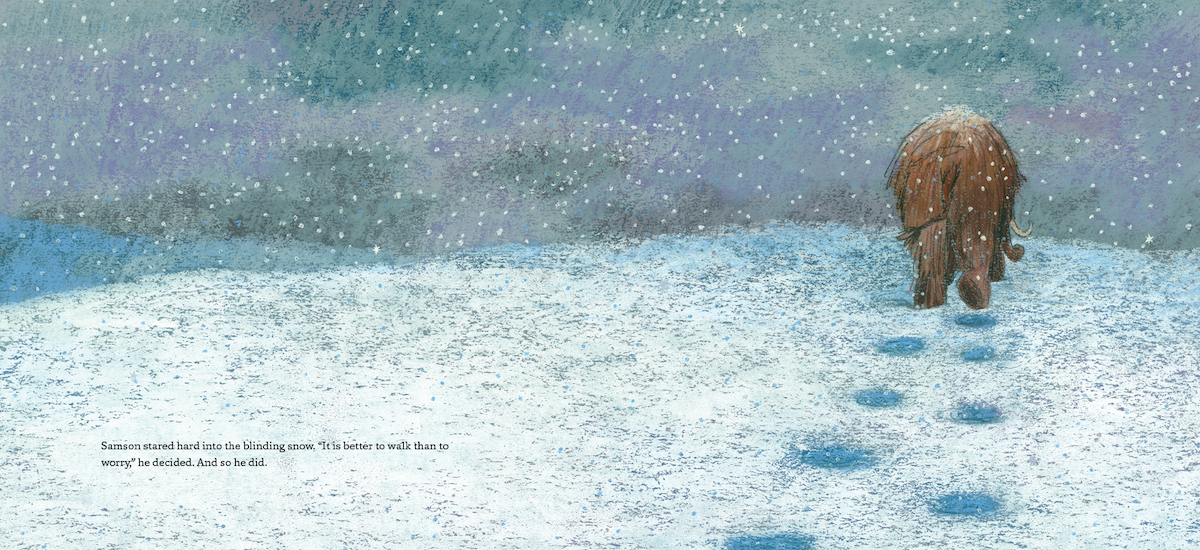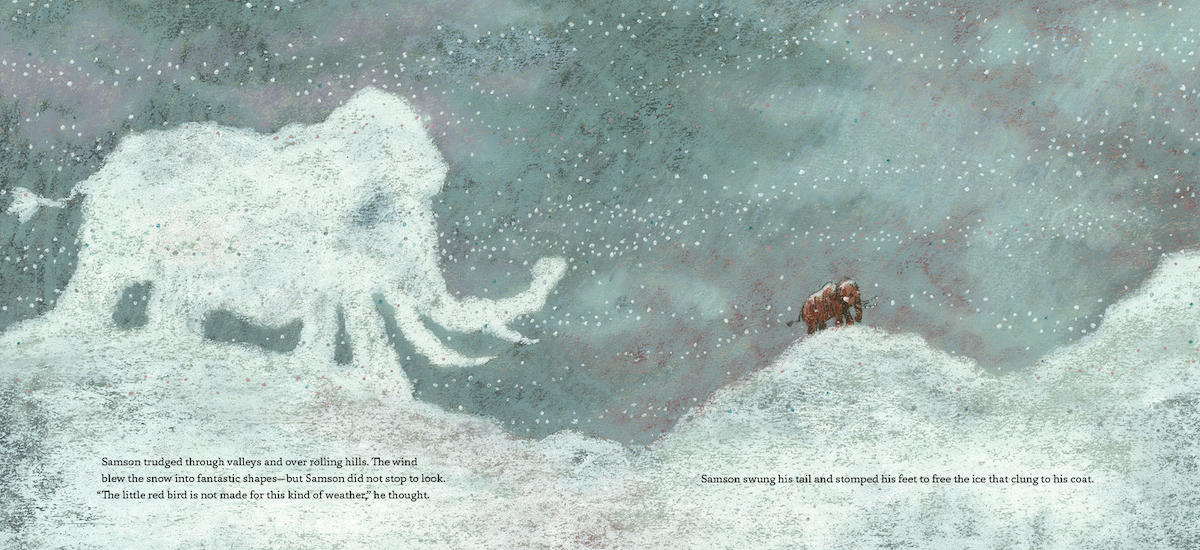Share this Post

Philip C Stead’s Samson in the Snow tells the story of a lonely woolly mammoth who selflessly risks his life for two strangers and learns about the power of friendship. Despite the dangers Samson encounters in his journey, though, we as readers almost never feel a sense of desperation or a loss of hope, and the reason for that is Stead’s illustrations.
Every piece of the book urges us move forward, from winter snow to spring flowers, from darkness to light, from left to right. Stead beckons us forward, deeper into the story, and the rhythmic consistency with which we move forward lulls us into a feeling of security despite the circumstances.
In fact, we’re so used to this rhythm of turning the page and moving toward a peaceful ending that the few pages where the images move backwards, from right to left, are almost jarring. We can feel the fear of the little bird as he’s pulled backwards in the snow because a part of us feels like we’re also moving backwards.
Luckily, Samson’s perseverance keeps him—and us—trekking forward toward shelter and friendship. Samson in the Snow is a story that exists in the quiet moments when Samson is searching for his friends, and it reminds us that true friendship is selfless, kind, and often found in the unlikeliest of places.
And, of course, it’s nice to know that at the end of a long, tiresome journey we can find warmth, friendship, and meadows filled with bright yellow dandelions.
Want to read more about Samson? Check out our ALL THE WONDERS of Samson in the Snow post, featuring an interview with author-illustrator Philip Stead, an exploration of empathy in Philip Stead’s picture books, and a craft that will help you carry your own Samson with you as you journey into winter.







